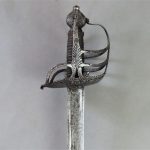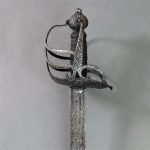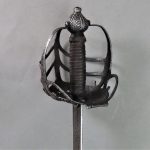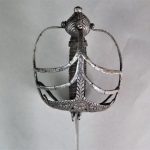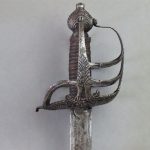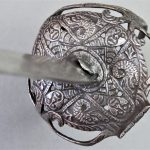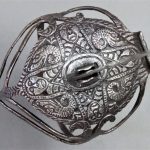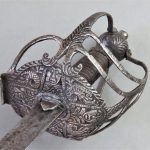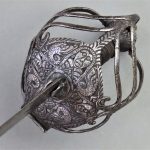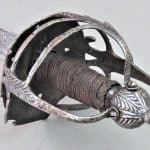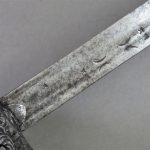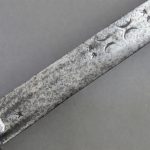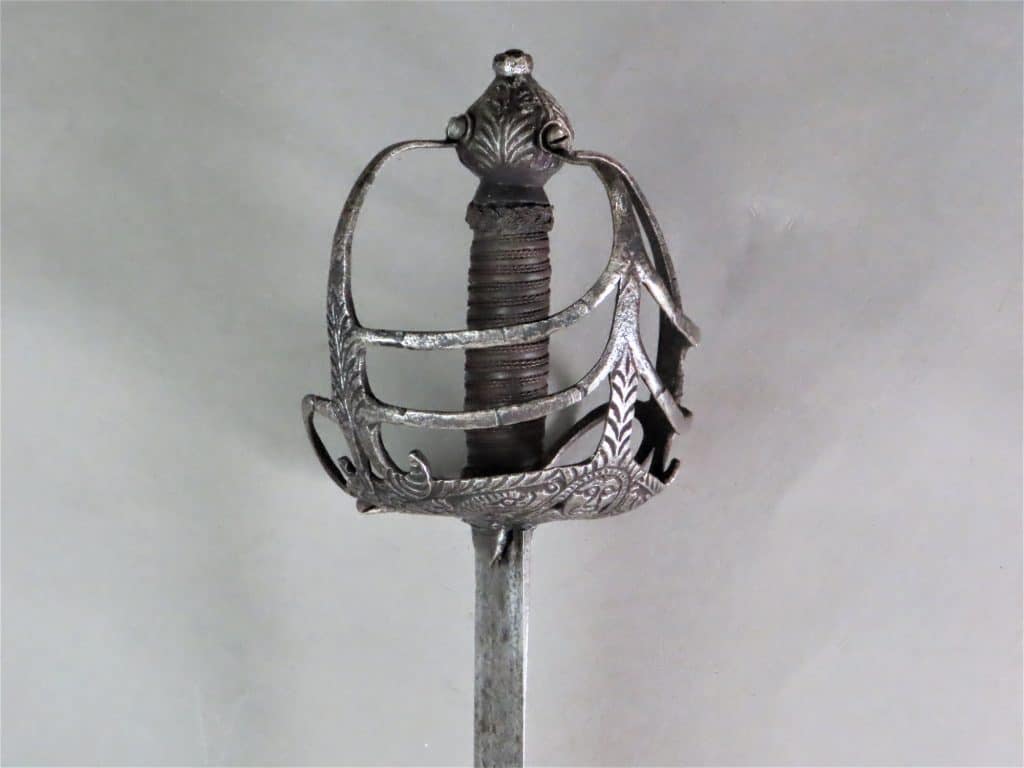
An English Civil War Period Mortuary Sword Circa 1640-1660
To enquire about this itemplease click here
Price: £3,950
Ref: AA.019.16
Item Description
An English “Mortuary” hilted sword dating to the middle part of the 17th century and the English Civil War and Protectorate periods.
The hilt is of typical form consisting of a broad saucer-shaped guard plate from which three main curved guard bars extend upwards ending with flattened angled terminals screwed into the pommel. Two downward facing bars emanate from each side of the knuckle bow towards its middle and join the base of each side guard bar to add strength to the structure. On the opposite side of the side bars to the rear another curved bar emanates and joins the dish near its curled ribbed wrist guard which is fashioned from the rear of the plate.
The guard plate is covered with chiselled decoration to the outside consisting of four panels one on either side of the blade, one above and one below. The panels contain the bust of a robed man wearing a long wig. Panels between these busts contain mythical sea creatures, or dragons, the meaning of which is unknown. The panels are enhanced by the depth of the chiselling and a lined border around the dish. The guard bars and pommel are decorated with chiselled lines in a fern-like manner. The pommel is globular in shape and has an integral button and a pronounced flared neck.
The designs on the hilt are almost identical to those on a sword illustrated in Stuart C Mowbray’s “British Military Swords”, Mowbray Publishing, 2013, in the York Castle Museum Collection, on pages 222-223, in the section dedicated to Mortuary Swords pages 178 to 225. The similarities between the engraved patterns on the hilts of these swords indicates that sub-groups of common design existed within the overall broad “Mortuary” category which were the signature designs of individual makers and workshops, now unknown.
The wooden grip is spirally wrapped with copper strip and twists of copper and has “Turk’s Heads” mounted top and bottom. It sits on an iron flanged plug mounted onto the inside of the guard plate from which two langets extend through the tang aperture to flank the blade either side for a short distance from the hilt.
The single-edged blade has a pronounced fullered ricasso. A shallow fuller runs from the hilt underneath the spine of the blade almost to the tip. A second shallow fuller runs underneath this nearer the middle of the blade and terminates after 7 inches (18 cm). Blade Maker’s marks are applied each side of the blade in the form of convex facing crescents flanked by small stamps consisting of a crown above an inverted “V” shape which also appears once each side nearer to the hilt. The blade was probably made in Solingen in Germany. Huge numbers of blades were imported into Britain during the Civil War period to fulfill demand for swords on both Royalist and Parliamentarian sides. The blade is 33.75 inches long (85.5 cm) and overall the sword measures 39.5 inches (100.5 cm) long.
For a further discussion on Mortuary swords see Cyril Mazansky, British Basket Hilted Swords, Boydell Press 2005, Chapter 11, pages 233 to 280.




